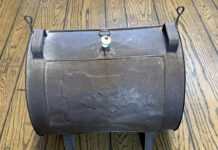Jean Purvis of Butler, Pa. writes, “Scott, I have noticed this year that I have had very few juncos at my feeder. In fact, days pass that I don’t have any — quite unlike former years. On the other hand, I have had more white-throated sparrows (a favorite), sometimes as many as six or seven. Have others noted a lack of juncos?”
Yes, I’ve had letters about a lack of juncos this winter — as I do every year. Others have also reported fewer cardinals and blue jays. This is normal. Populations fluctuate from year to year, so we shouldn’t expect to see a constant number of each species from year to year.
Severe weather can affect bird numbers over a large area. Long harsh winters and even brief ice storms can decimate winter populations so spring breeding populations are usually low.
Cool wet springs can reduce nest success because it’s difficult for adults to find the insects needed to feed their young. Outbreaks of disease can also cause populations fluctuations.
Adaptation
West Nile virus hit blue jays and crows particularly hard in the mid-2000s, and their populations are still recovering in some areas. Most wildlife populations hit their low points in late winter. Only the “best,” the most genetically fit, survive to breed in the spring.
This ensures that the individuals that breed each spring are the best adapted to the local environment. So it’s not unusual for numbers of individual species to vary from year to year.
It’s one of the reasons for the Great Backyard Bird Count (GBBC, www.birdcount.org). By taking a snapshot of winter bird populations, biologists can detect long-term trends.
For example, let’s examine the last 10 years of GBBC data for three birds in three different states. The last ten years of junco data reported in Pennsylvania are remarkably consistent. Last year, 3,816 Pennsylvania counters reported 35,127 juncos, an average of 9.2 juncos per checklist.
Changing numbers
The nadir of junco numbers over the last 10 years occurred in 2002 when 1,620 counters reported 11,503 juncos, an average of 7.1 per checklist. Though absolute numbers of juncos ranged widely over this time period, the variation is due to different numbers of counters.
More counters see more juncos. The average number of juncos per checklist, a better indicator of junco population health, ranged from seven to nine. Furthermore, dark-eyed juncos have been the second or third most frequently reported species on the GBBC nationally.
So, though junco numbers may seem to vary erratically in individual backyards, on statewide and national scales their numbers are strong and consistent over the last 10 years.
Cardinal numbers in West Virginia show similar trends, though absolute numbers are lower because fewer West Virginians than Pennsylvanians participate in the GBBCs. West Virginia cardinal numbers peaked in 2010 at 4,247, for an average of 7.3 cardinals per checklist.
In 2003, West Virginia reported far fewer cardinals (1,959 on 246 checklists), but the average per checklist was 8.0.
Over the last 10 years of the GBBC, West Virginia counters reported average checklist counts ranging from 4.0 to 8.0. In Ohio, blue jay numbers peaked in 2010 at 6,604 (from 2,042 checklists) and crows peaked at 19,230 in 2002 (15.2 per checklist). Ohio blue jay numbers have increased slowly and steadily since their 10-year low in 2005 (2,626).
Crow numbers dropped precipitously from 2002 (19,230) to 2003 (4,935). Over the last six years crow numbers on Ohio GBBCs have bounced up and down rather erratically. One interpretation of these results is that Ohio blue jays have slowly recovered from the West Nile virus epidemic, while crows are having trouble making consistent population gains.
Weather related
But remember, the GBBC is just a snapshot in time. What counters report depends on many factors including weather on count days. On cold, snowy, or rainy days, birds may be less active and fewer people are likely to participate, and thus fewer birds are counted.
If counts were done on back-to-back weekends, results could vary widely. That’s why the GBBC is just one of many indices used to monitor wild bird populations. But it’s one that relies on you, the citizen scientist.
(Send questions and comments to Dr. Scott Shalaway, RD 5, Cameron, WV 26033, or by e-mail via my website, http://scottshalaway.googlepages.com.)












The GBBC may be over but you can still submit bird sightings year round at http://www.junponline.com , great resource for birders to publish and share their sightings.
I have not noticed a reduced number of juncos in Chardon OH. I’m looking at the feeders now – there are 6 or 7 juncos, 5 male cardinals, 8 female cardinals, several finches, sparrows, a couple robins, 1 starling and 2 jays jockeying for positions on the feeders or on the ground. Yesterday – 4 species of woodpeckers stopped by and enjoy seed, suet and berries. Truly a pleasure to observe……